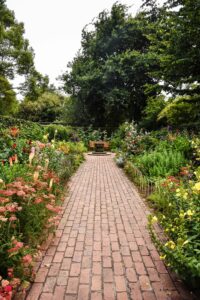Tree and shrub fungi become increasingly active in May, driven by the warmer and moister conditions typical of spring. These organisms play complex roles in ecosystems, sometimes beneficial as decomposers, and other times harmful as disease agents. This overview highlights significant fungi affecting trees and includes common diseases in woody vegetation (shrubs), providing insight into their impact and management strategies. This post is about some of the key fungal diseases in trees and woody vegetation as seen at this time of year.
Chronic Oak die-back
With chronic oak dieback, the tree loses leaves and as the trees have recently come into leaf the impact is noticeable. The decline of the tree may be caused by one or a number of: the urban environment, soil compaction, salt levels, herbicide usage, low moisture content, or recent construction nearby.

There are ways to mitigate decline such as decompaction with an air spade and mulching around the base of the tree. The use of biochar within the rootzone assists in decompaction and soil fertility.

In this scenario in Newton St Faiths Norfolk within a new housing development oak decline was clear from the tree safety survey. Compaction of the soil and tree root damage from the development manifested itself in tree crown die-back.
Following a tree safety report and a successful planning application, pruning took place, then tree root zone works with an air-spade and mulching works were done. The oaks have a significant amenity value within the development.
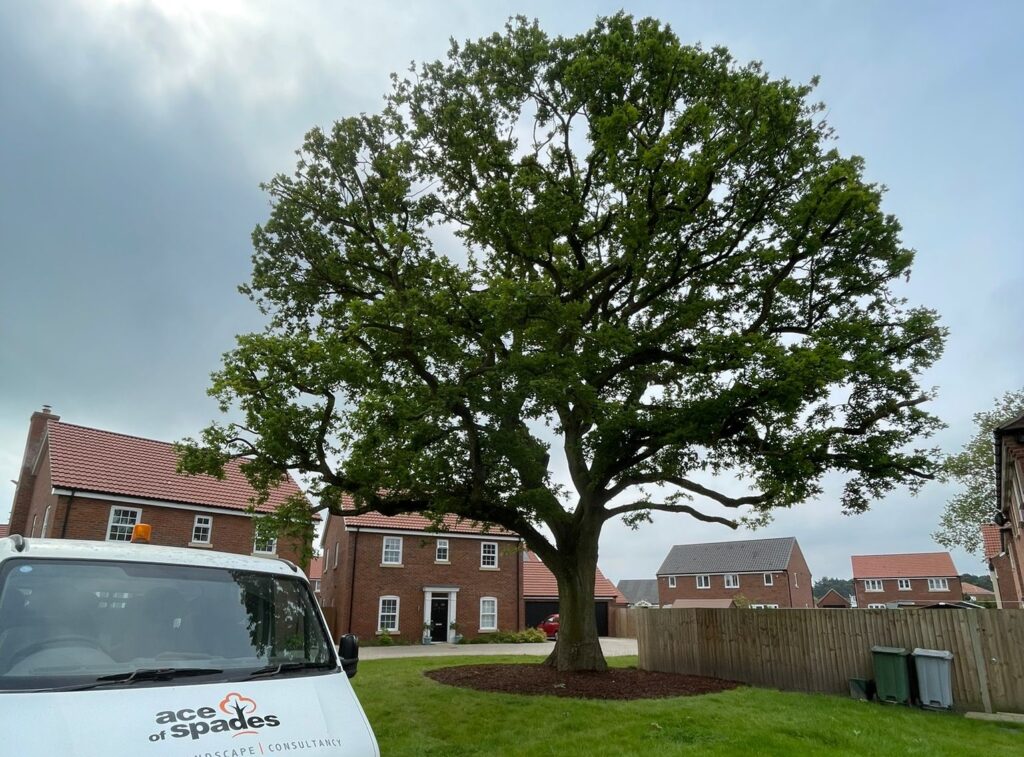
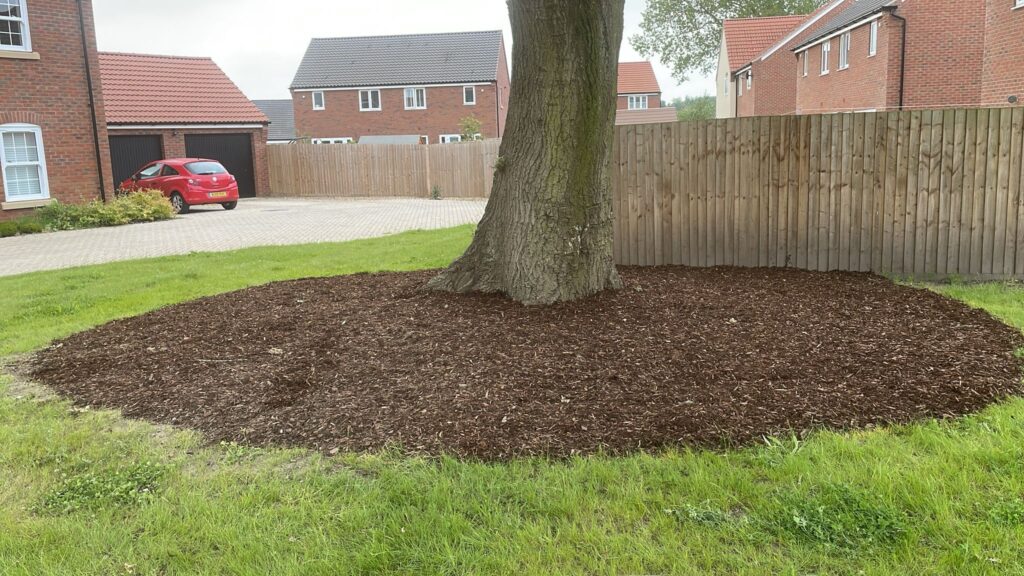
Acute Oak decline
Commonplace in East Anglia amongst urban and rural trees, these trees are often present as early mature trees close to field edges in hedgerows. Acute oak decline, one of the key fungal diseases in trees, is noticeable as a black exudation on the tree trunk that appears at this time of year. The exudation may be washed away in heavy rain so not always obvious. Once the tree starts to decline death follows quickly. Over winter trees with acute oak decline hold their brown crispy leaves within the tree canopy. This means they are visible at a distance.

In this case from Hempstead in Holt, Norfolk the tree has died with the neighbouring oak tree remaining healthy.
The dead tree will now require safety crown management and the adjacent tree with the group will also need some pruning to mitigate future wind or storm damage. All tools used will then be disinfected to prevent cross contamination and the wood from the trees will be kept on-site to prevent the spread of the pathogen.
Dutch Elm Disease (Ophiostoma spp.)
Elm trees are vulnerable to this disease, which obstructs their water-conducting tissues, causing leaf yellowing and wilting, particularly in upper branches. The disease is spread by elm bark beetles.
Generally, these self-seeded trees do not reach mature size and are seen within unmanaged hedge rows as dead trees when they reach around 10-15 years old. Removal is necessary as they present a risk of failure.
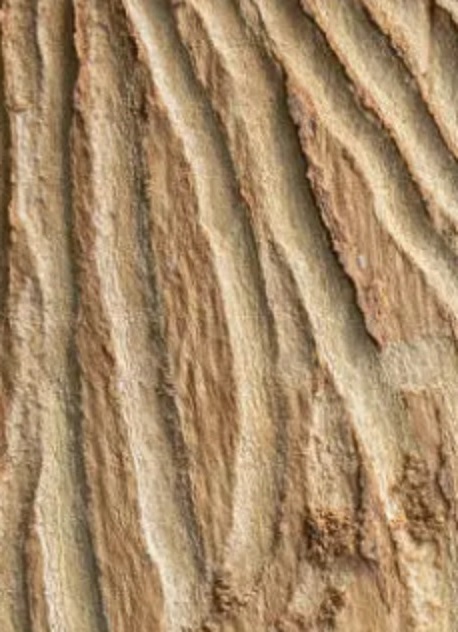
Fireblight (Erwinia spp.)
Affecting mainly members of the Rosaceae family such as pears, apples, and some ornamental shrubs, fireblight is a bacterial disease that causes branch and twig die-back, which gives the plant a scorched appearance. Any number of the flower trusses and shoot tips may wilt and turn brown or even black. Extensive damage follows after wet, warm and or windy weather, which means it spreads rapidly in warm and wet weather typical of late spring.
It is best to prune away dead material and burn it and to sanitise pruning tools to prevent any spread.
Polyporous squamosa
Polyporus squamosus, commonly known as Dryad’s saddle or pheasant’s back mushroom, is one of the key fungal diseases in trees that typically appears on them during spring and early summer.
Polyporus squamosus is easily recognisable by its large, fan-shaped, brown and cream-coloured caps, which are decorated with a pattern of dark brown scales that resemble the back of a pheasant. The underside of the cap features many tiny pores in place of gills, which release spores. Dryad’s Saddle mainly grows dead or dying hardwood trees, particularly maples and elms.
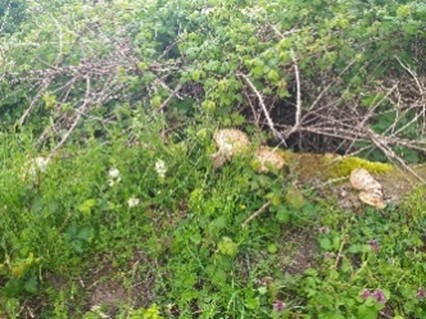
As a saprophytic fungus, Polyporus squamosus plays a crucial role in the decomposition of wood. It helps break down complex organic materials, returning nutrients to the soil and aiding in the ecological cycle of forested areas. This process is vital for nutrient cycling and forest health.
Whilst primarily decomposing dead wood, Polyporus squamosus can also act as a weak parasite on living trees that are already stressed or weakened by other factors. The presence of this fungus on a living tree is often an indicator of underlying health issues in the tree.
The fruiting bodies of the fungus, which are the most visible part, typically appear at the base of the trunk or on large branches. Spotting these can be a sign that the tree is compromised and may require further inspection or intervention.
Management Strategies
Monitoring
Regularly check trees for signs of fungal growth, especially those that appear unhealthy or are already damaged. Early detection can prevent more serious decay as the fungus progresses.
Preventive Care
Maintain tree health through proper watering, mulching, and fertilisation practices. Healthy trees are less likely to succumb to fungal infections and other diseases.
Removal
If Polyporus squamosus is found on a tree, consult with an arborist to assess the extent of the decay and determine the best course of action. In some cases, removing the affected part of the tree can prevent further spread.
Polyporus squamosus is a fascinating fungus due to its ecological role and distinctive appearance. While it poses little threat to healthy trees, its presence on living trees should not be ignored, as it often signifies health issues that may need addressing. Managing tree health proactively and monitoring for signs of decay are crucial steps in maintaining the vitality of forested and landscaped areas.


